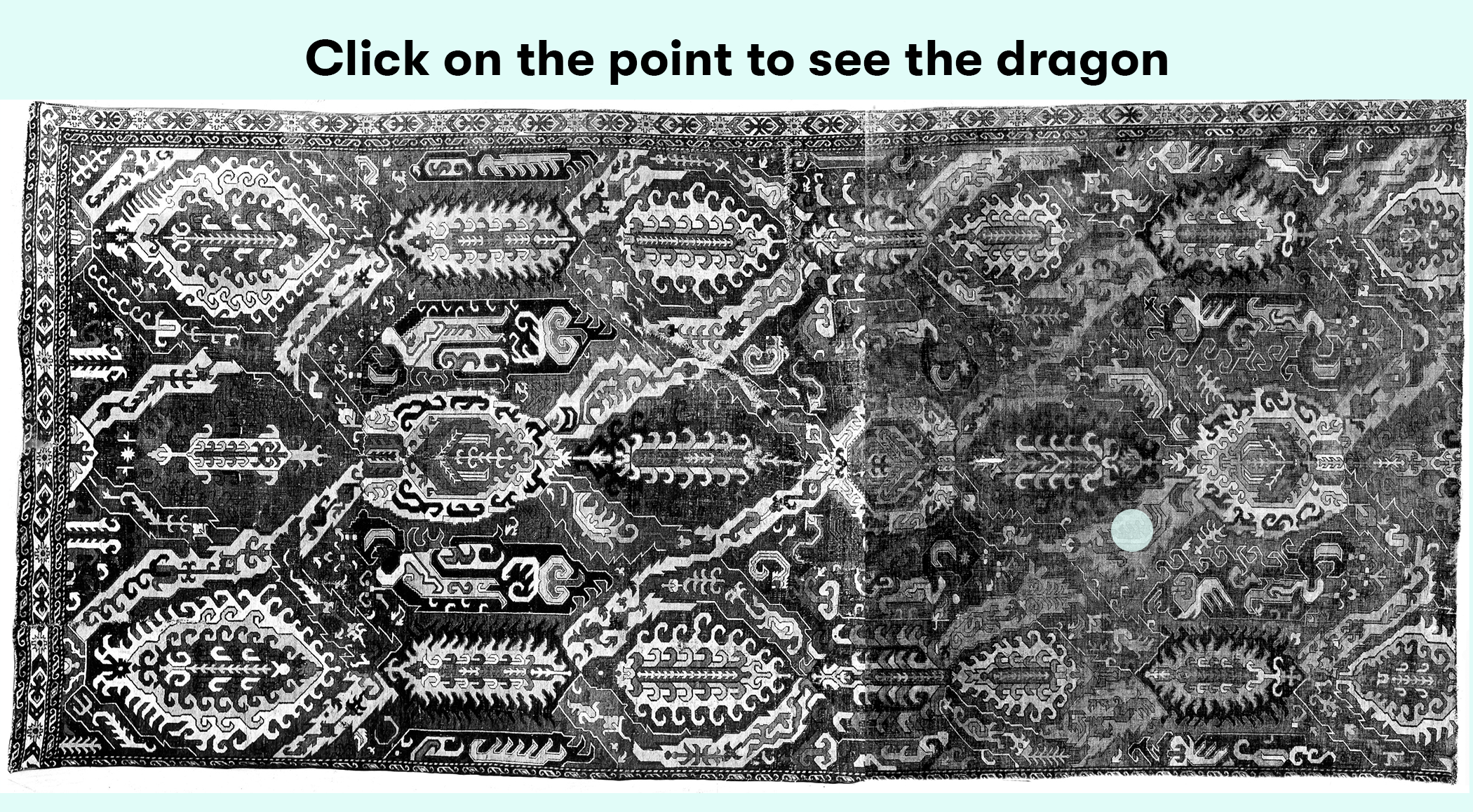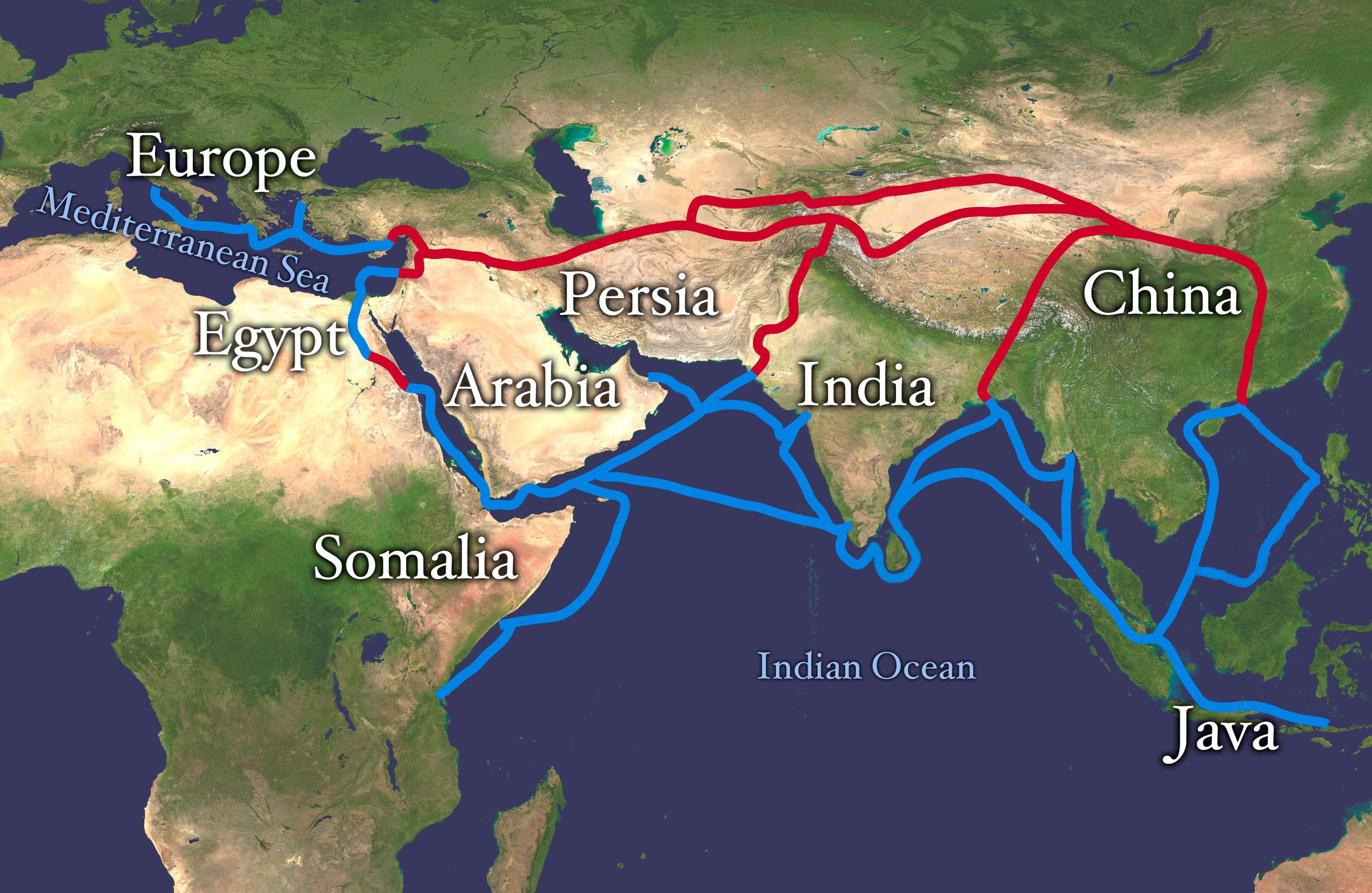en
- de
- en
Where is the Dragon?
How does a mythical creature from China end up on a carpet produced in the Islamic regions? And if it's called a Dragon Carpet why can't I see the dragon? Let's find out in this story how cultural transformations happen over time by investigating the origins and journey of this mythical dragon.
The star of the "CulturalxCollabs - Weaving the Future" project is a so-called Caucasian dragon carpet from the 17th century. The carpet was woven in Caucasus region. A territory that today includes Georgia, Armenia, Azerbaijan and Iran. A dragon carpet - all well and good - but: where is the dragon?
In order to discover the dragon, we have to go in search of clues. And not only because the carpet is so badly destroyed and the places where we would find the dragon no longer exist, but also because we need to know what a dragon looks like in the first place. So the first question is: What does a dragon look like?
What does a Dragon look like?
Over the last 5000 years, we find the mythical creature dragon in numerous cultures. The oldest representations come from Mesopotamia and China. Dragons are composed of different animals depending on their origin. Their appearance is as varied as the combination of, for example, snake, bird, fish, hoofed animal, predatory cat and fantasy allows.
Do you recognize this dragon from the Pergamonmuseum?
We can divide dragons into two groups: Snake dragons and lion dragons.
Snake dragons, as their name suggests, originate from snakes. Their slender body shows an open mouth with sharp teeth. They usually have small pointed ears and horns.
Whereas Lion dragons are distinguished by a less long physique. Special features are their pronounced front paws, their flame-like wings and the differently long tail.
What does a Chinese dragon look like?
In China, the dragon has been an integral part of art since the 2nd millennium BC. From the 12th century, a Chinese description is preserved in the dictionary Erh‑ya‑yi: "Antlers as of a stag, head as of a camel, eyes as of a demon and neck as of a snake, belly as of a shell and scales as of a fish, claws as of an eagle, paws as of a tiger and ears as of cattle."
How does the dragon come from China to the Caucasus?
On the trade routes across Central Asia. With the trade of all kinds of goods, the representations of dragons were also spread. Be it on textiles, metalwork or the like.
The earliest Islamic representations of dragons from the 11th century are found on coins. Small and valuable, they traveled through the Near East in the pockets of merchants. Already 100 years later they can be found in local architecture, on wooden doors, on door handles or on carpets and textiles.
How is the dragon described in Islamic sources?
In Islamic-influenced art, the first to describe dragons in his cosmology was al Qazwini, a 13th century Persian physician: "A beast of immensely large body shape, terrible sight, very long and broad stature, large head, sparkling eyes, wide mouth and belly, with numerous teeth, devouring an incalculable number of creatures..."
A Persian miniature from the 16th century illustrates this vividly.
Up to the 16th century the Caucasus region belonged to Persia. Its geographical location made it a melting pot of numerous artistic, religious and political influences over the centuries.
Dragon Carpets from the Caucasus region
We now know what a dragon can look like and how its motif came to the Caucasus region. The question remains: where is the dragon on our 17th century carpet?
Of around 150 known Caucasian dragon carpets (16th-18th centuries), the oldest in the Berlin collection can be dated to the 16th century due to its clear motifs, exact drawing and strong Persian influence. The Caucasus belonged to Persia at that time. Its geographical location made it a melting pot of numerous artistic, religious and political influences over the centuries. The pointed diamonds, which are red and yellow here, go back to Persian influences. It is typical that the dragon is always woven into the centre of some of the pointed diamonds. This is where we have to look for it. The original features of the dragon are recognisable: ripped mouth, long tongue, scaled and spotted skin, wing- or flame-like appendages.
CulturalXCollabs Project Carpet is a Doppelgänger of this carpet!
On the carpet that serves as a template for the project carpet, the dragon is no longer preserved. A fire destroyed the carpet in exactly these places. But there is still a black and white photo.

Looking for the Dragon Motif
The fact that the dragon is not recognisable, apart from the state of preservation of the carpet, is due to the following reason: as in the game "Silent Mail", where a whispered word travels from ear to ear and is understood less each time, the pattern of the dragon has also been passed on and understood less. Each repetition or copy was worse than its original. The repetition took place so many times until no one knew that a dragon was actually supposed to be woven inside the diamond. Since our carpet is at the end of the "Silent Mail", i.e. at the end of about two hundred years of dragon carpet production in the Caucasus, the motif was no longer understood. How then are we to understand or recognise it today?
Dragon Carpets in the Berlin Carpet Collection
Four of the five Berlin dragon carpets clearly illustrate this pattern decay. The oldest carpet (I.3) is from the 16th century. The dragons show scales, flame wings, a torn mouth and claws. On the carpet I.2 the dragon is also still visible. But not on our project carpet. The youngest carpet from the 18th century (I. 8/59) shows again a recognizable dragon.
Only when the weavers and we understand the history of the dragon in the Caucasus, can we recognize him when he comes across our path.




